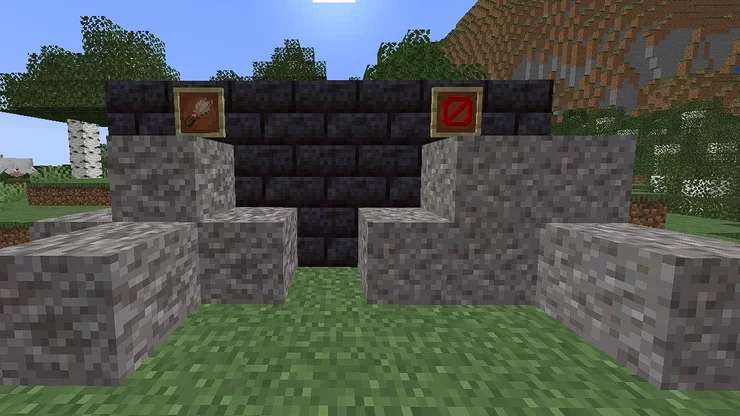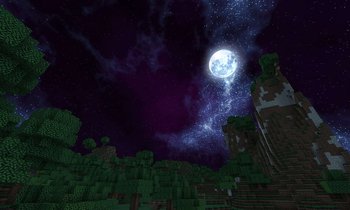The long-awaited addition of Minecraft's archeology system has finally arrived with the 1.20 Trails & Tales update, after initially being delayed from the Caves & Cliffs update. Through the use of a brush, players now have the ability to unearth intriguing items by excavating suspicious sand and gravel blocks. Among the new loot items introduced are sniffer eggs and pottery sherds.
However, it's important for players to exercise caution and be aware of certain aspects regarding Minecraft's new archeology feature. These blocks, which play a central role in the system, are exceptionally delicate and function differently compared to their counterparts. Due to their fragility, it is advisable for players to familiarize themselves with their unique mechanics.
How to find and use Suspicious sand
In the latest Minecraft 1.20 update, suspicious sand blocks can be found naturally in newly discovered rooms beneath desert pyramids. They can also appear at the base of desert wells and generate within ocean ruins structures located in warm temperature oceans.

Suspicious sand has a slightly different texture compared to regular sand, with noticeable cracks and holes on its surface. These blocks are affected by gravity and will break upon falling, without dropping any items. The same outcome occurs when they are manually broken or when a tool, even one enchanted with Silk Touch, is used.
Obtaining suspicious sand as an item in Minecraft is possible if it falls from a height greater than 30 blocks, lands on an upward-facing bubble column, or passes through two stacked cobweb blocks. However, the block itself will not retain the loot items it contains.
The main purpose of suspicious sand in Minecraft is to be brushed using the new brush tool. After a few seconds of brushing, it will release the items it holds and transform into a regular sand block. The specific items contained within suspicious sand depend on where the block is generated.
Items found in suspicious sand (Desert Pyramids)
- Archer Pottery Sherds
- Emeralds
- Gunpowder
- Miner Pottery Sherds
- Prize Pottery Sherds
- Skull Pottery Sherds
- TNT Blocks
- Diamonds
Items found in suspicious sand (Warm Ocean Ruins)
- Coal
- Emeralds
- Wheat
- Wooden Hoes
- Gold Nuggets
- Angler Pottery Sherds
- Shelter Pottery Sherds
- Snort Pottery Sherds
- Sniffer Eggs
- Iron Axes
Items found in suspicious sand (Desert Wells)
- Arms Up Pottery Sherds
- Brewer Pottery Sherds
- Bricks
- Emeralds
- Sticks
- Suspicious Stew
How to find and use Suspicious gravel
Similar to suspicious sand in Minecraft, suspicious gravel is a block influenced by gravity that is extremely fragile but contains loot items that will be revealed when brushed. The specific items contained within the suspicious gravel block are also determined by where it naturally generates in the game world.

Just like suspicious sand, players in Minecraft will generally be unable to break the block to collect it. However, it can be obtained by allowing it to fall from a height of 30 blocks, passing through two vertically stacked cobweb blocks, or landing on a bubble column. Otherwise, players will need to use commands or switch to Creative Mode to acquire the block.
Suspicious gravel can be found in Minecraft's cold temperature ocean ruins structures, as well as the newly introduced trail ruins structures in the 1.20 update. Brushing the suspicious gravel will cause the loot to be revealed and transform the block back into an ordinary gravel block.
In contrast to suspicious sand blocks, suspicious gravel blocks found within trail ruins have two distinct loot tables in Minecraft 1.20. Depending on the specific block that is brushed, common or rare items may pop out, each offering different types of loot.
Items found in suspicious gravel (Cold Ocean Ruins)
- Coal
- Emeralds
- Wheat
- Wooden Hoes
- Gold Nuggets
- Blade Pottery Sherds
- Explorer Pottery Sherds
- Mourner Pottery Sherds
- Plenty Pottery Sherds
- Iron Axes
Items found in suspicious gravel (Trail Ruins - Common)
- Blue Dye
- Bricks
- Brown Candles
- Emeralds
- Green Candles
- Light Blue Dye
- Orange Dye
- Purple Candles
- Red Candles
- Wheat
- White Dye
- Wooden Hoes
- Yellow Dye
- Beetroot Seeds
- Blue Stained Glass Panes
- Coal
- Dead Bushes
- Flower Pots
- Leads
- Light Blue Stained Glass Panes
- Magenta Stained Glass Panes
- Oak Hanging Signs
- Pink Stained Glass Panes
- Purple Stained Glass Panes
- Red Stained Glass Panes
- Spruce Hanging Signs
- String
- Wheat Seeds
- Yellow Stained Glass Panes
- Gold Nuggets
There is a possibility that Minecraft will introduce additional functionalities and loot associated with suspicious sand and gravel blocks in the future. While Mojang has not made any official announcements regarding this, considering that archeology is a recently introduced feature in the widely enjoyed sandbox game, it is likely that it will receive further advancements and expansions in the coming updates.
>>> Read more: Complete Guide To Use All Village Mechanics In Minecraft










Comments